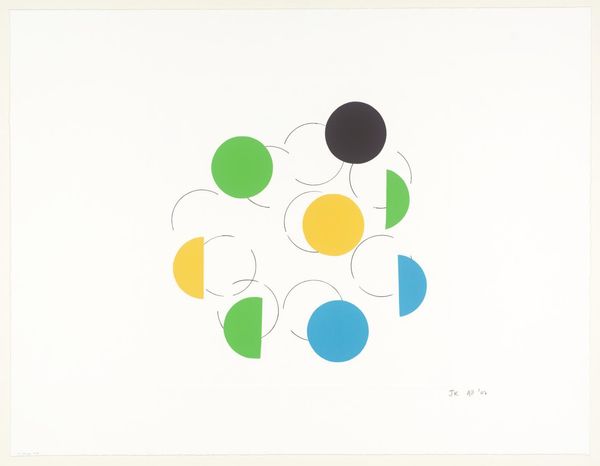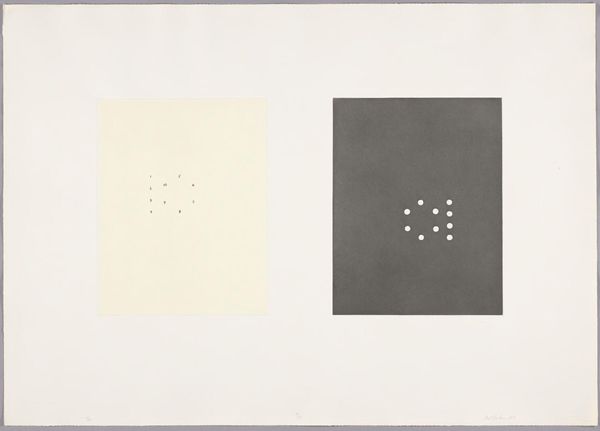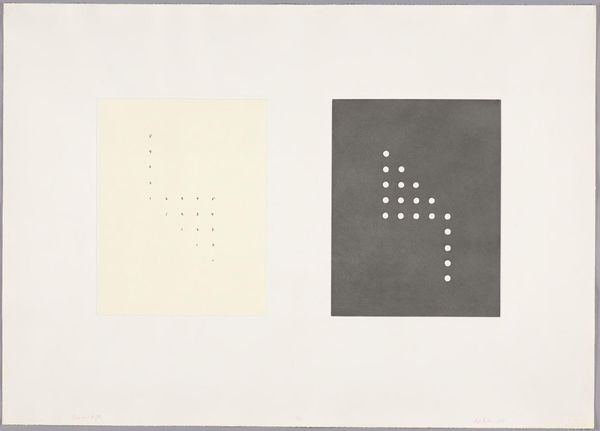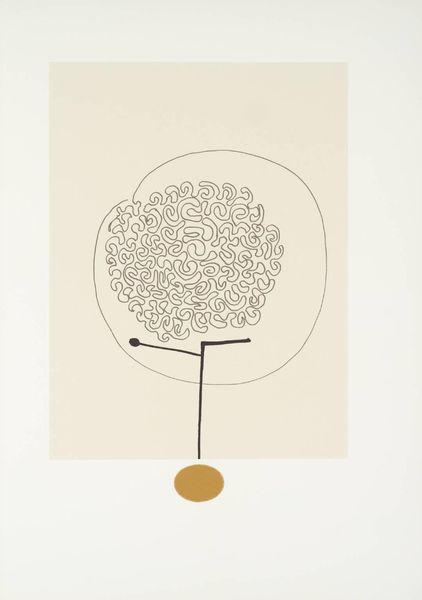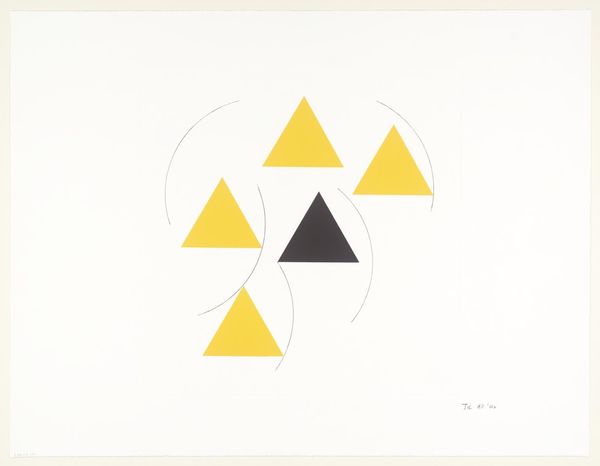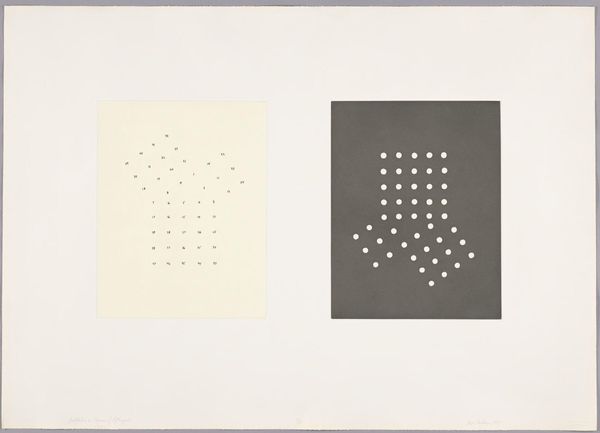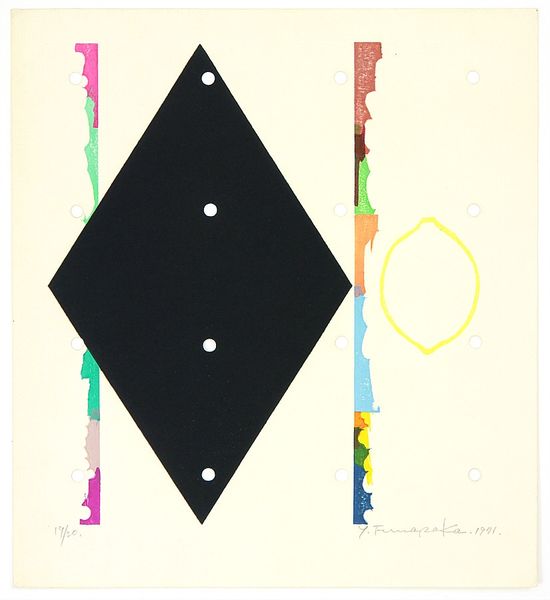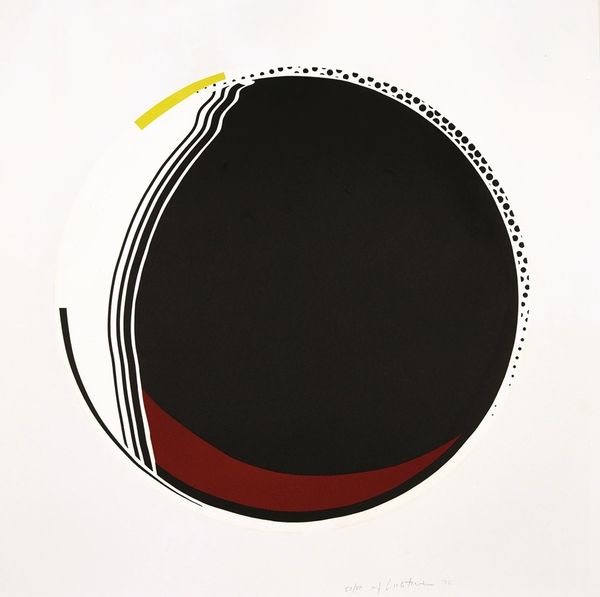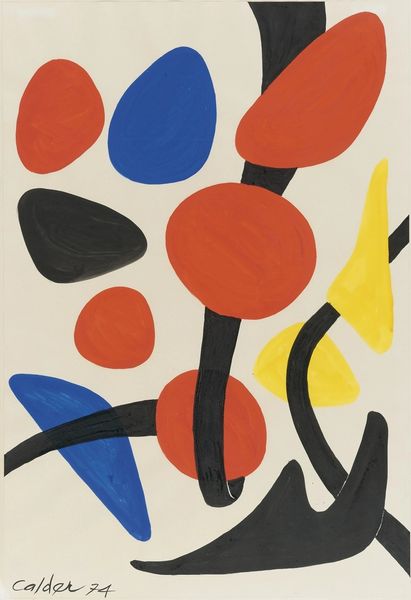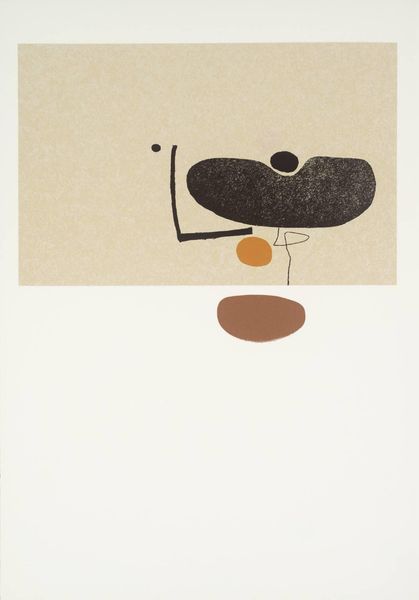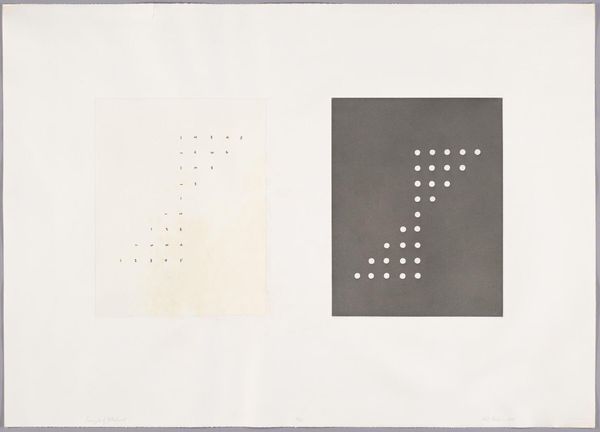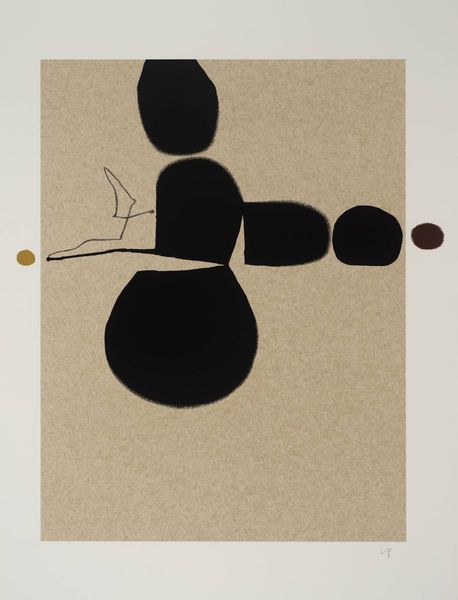
Dimensions: image: 348 x 374 mm
Copyright: © The estate of Justin Knowles/DKRT Investments Corp. | CC-BY-NC-ND 4.0 DEED, Photo: Tate
Curator: This is Justin Knowles' "S.26.02," currently held in the Tate Collections. Editor: It's strikingly minimal. The geometric forms and limited palette feel almost austere. Curator: Knowles often explored mathematical and serial principles in his work. The interplay of light and dark, whole and incomplete circles suggests duality. Do you see any meaning there? Editor: Perhaps a visual meditation on cycles of power and visibility? How certain narratives or groups are highlighted while others remain obscured. It does remind me of current political issues. Curator: Knowles' imagery often transcended specific events, accessing broader, resonant patterns. Editor: Even the yellow bursts forth like a new era dawning. It feels radical, yet calm. Curator: It's fascinating how such a simple composition can evoke such rich layers of interpretation. Editor: A testament to the power of abstraction!
Comments
Join the conversation
Join millions of artists and users on Artera today and experience the ultimate creative platform.
tate 6 months ago
⋮
Although finished works in their own right, these prints can also be thought of as working models for larger paintings or three-dimensional objects. Knowles overriding concerns were with form, dimension and space, and he realized his works through the application of various systems to a set of ideas, what he called ‘artform concepts’. Knowles often used the same concept, expressed in a combination of forms, to make works in different materials and on different scales, sometimes making work specific to a particular site. S.157iv.01 2002 (Tate P78738) for example, uses similar forms to those in the installation, D.156iv.01/02 2001-2 (National Gallery of Prague).
